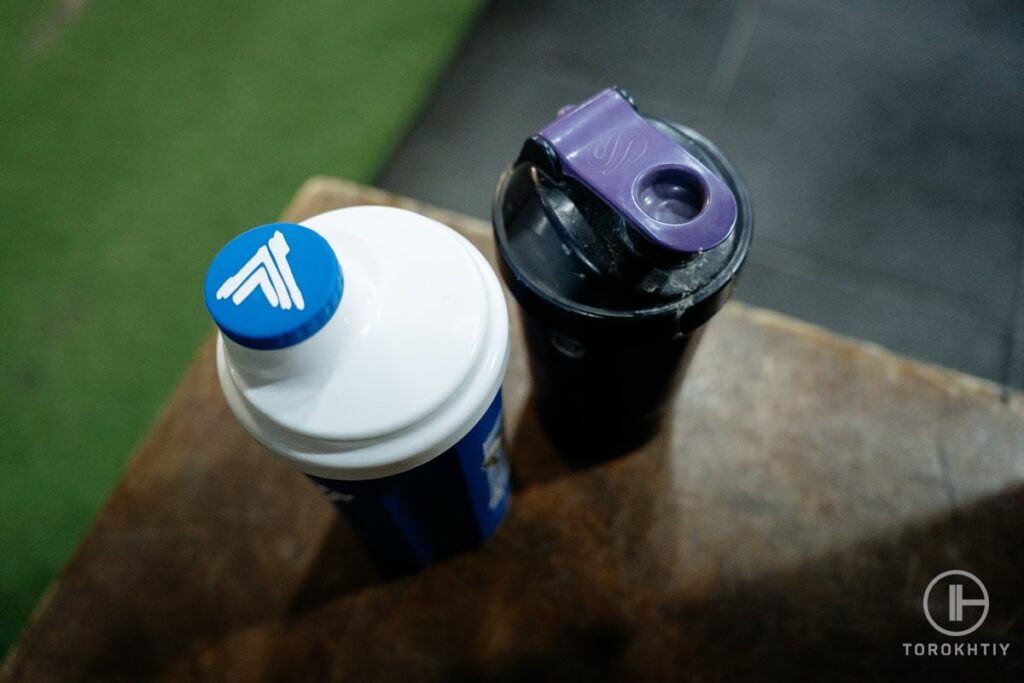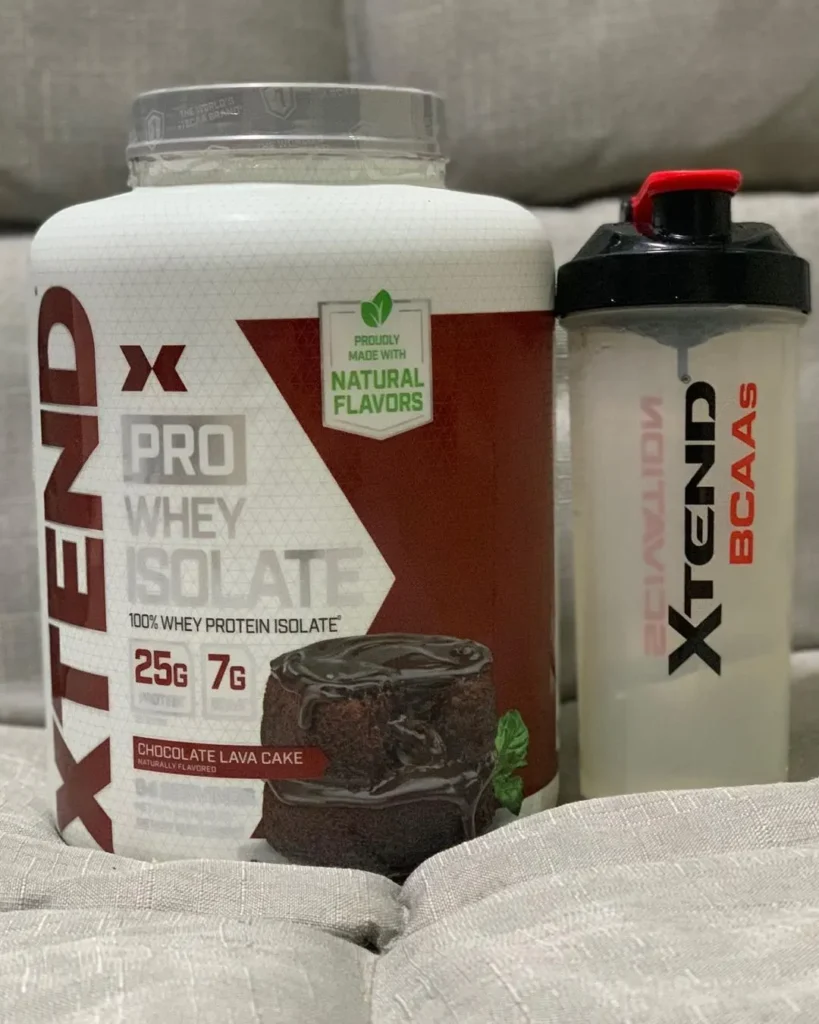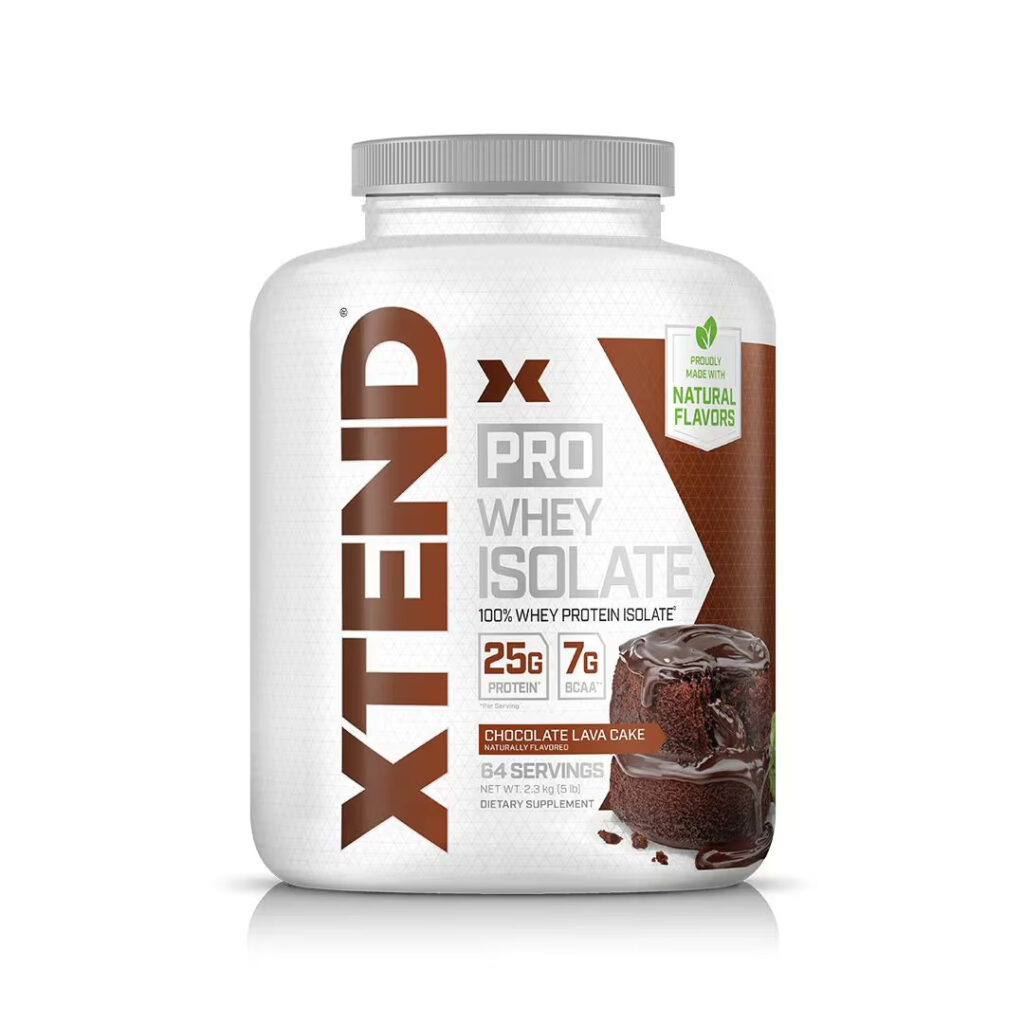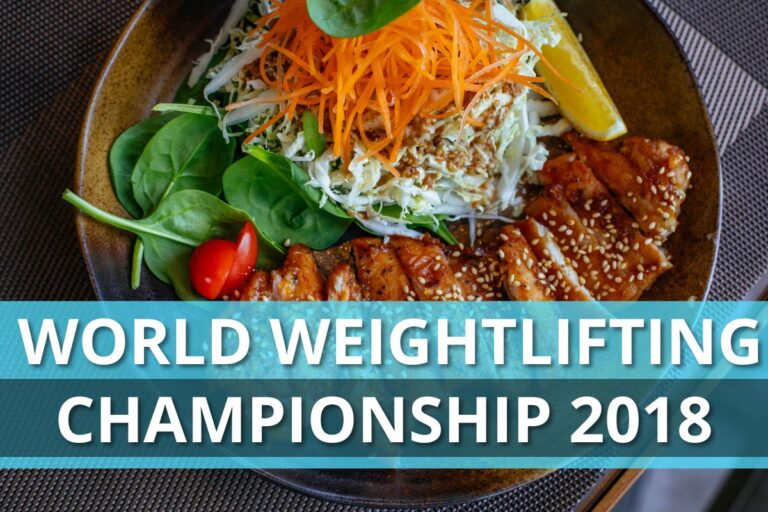What to Mix Protein Powder With?
This article will teach you what do you mix protein powder with. What are the best options for your goals? The best liquid to mix with protein powder. Also, different options and all things to make with protein powder.
What to mix protein powder with? If you are looking for low calories with your shakes, drink it with water. If calories are not an issue for you, then with milk.

Best Ways to Mix Protein Powder
There are various ways to mix protein powder, including water and different types of milk. Determining the optimal choice for combining protein powder depends on individual goals, preferences, and allergies. Take a look at the options below to determine the most suitable one for you. So, what to mix whey protein with? Let’s have a look!
1. Skim Milk
The difference between regular and skim milk is that while standard milk has an average of 3.5% fat content, skim milk has an average of 0.5%. Which gives you some positives and negatives depending on your goals.
Skim milk is more beneficial if you follow a very low-calorie diet. It is also the best choice for people who have a doctor’s recommendation to reduce their intake of saturated fats or fats in general. Thus, the combination of skim milk with protein powder is great for people who don’t have extra calories and want to consume the maximum amount of protein with the minimum amount of fat. An example of a great skim milk option with no additives or preservatives.
If you don’t have a problem with a bit more calories in whole milk and prefer its taste or consistency, which is slightly different due to the extra fat, then you can choose it.

2. Reduced-Fat Milk
Fat-reduced milk is similar to skim milk except that skim has 0.5% of fat while fat-reduced milk has somewhere around 1-2%. This type of milk is suitable for people who want to consume fewer calories and fat with milk. Taking protein powder with reduced-fat milk is one of the most common options among exercisers. This is a simple way to increase your daily protein intake, improve the taste of your shake with less fat and calories. Here is a good option for 2% Reduced Fat Milk.
3. Whole Milk
Whole milk is the opposite of the options we have listed so far. It is richer in fat than the other milks but that does not make it any more harmful for healthy people.
Whole milk was criticized mainly due to its saturated fat content, which was linked to heart disease. Recent research has cast doubt on this connection, suggesting that people without high cholesterol or heart disease may consume moderate amounts of saturated fat without adverse health effects. However, individuals with such conditions should follow their doctor’s advice and limit their intake of saturated fat.
Whole milk has many benefits for people who have a hard time reaching their daily calorie requirement. So help yourself with more fat intake than milk alone or on a protein shake.
For all the people who are taking animal products, don’t follow low-calorie diets, don’t have restrictions for medical reasons, and have no problem taking a little more healthy fats from milk with their protein shake then whole milk is a very good option.

4. Goat Milk
There are various debates about which is more useful, cow’s or goat’s milk. Well, the truth is that both have their benefits. But what is the difference?
Compared to cow’s milk, goat’s milk contains similar or higher levels of protein (9g vs 8g per 8 ounces), more calcium (330g vs 275-300g per 8 ounces), more fat (10g vs 0-8g per 8 ounces). Additionally, goat’s milk has lower lactose content (12% less per cup) and is higher in prebiotic carbohydrates that support digestive health. Goat’s milk is easier to digest for those with mild lactose intolerance and may be less disruptive to digestion than cow’s milk.
As with other products, some people may be allergic to goat milk, in which case this product is not suitable. It is also not suitable for vegetarians.
In all other cases, it is worth giving it a chance, maybe you will like it, try the one we recommend.
5. Almond Milk
Almond milk is a combination of ground almonds and water. It can include other ingredients but you’d better give it a try the standard version to appreciate the flavor and texture of the combination.
Almond milk is very suitable for people with lactose intolerance and vegans. The combination of almond milk and protein is excellent for people who don’t have a problem with a little extra fat intake and want to get their protein in a tasty and healthy way with sugar and gluten-free milk. It is also a good idea to choose almond milk with no added sugar like the one we recommend.
Remember that people with allergies to tree nuts should be avoided.

6. Soy Milk
Soy milk also ranks among the most recognizable types of milk. It is the preferred option among some people such as vegans and lactose-intolerant people. It is made from soaked, ground, and cooked soybeans.
What are the health benefits? Soy-based foods may have a modest effect on reducing low-density lipoprotein (LDL, or “bad”) cholesterol levels, they typically contain less saturated fat compared to diary and are also a good source of other beneficial nutrients such as good fats (monounsaturated fats), vitamins and minerals.
It may be noted that the taste of soy milk is from the category of “love it or hate it”. You just have to try it and see if you like it, and you’ll either get hooked on it or reject it, despite all the health benefits. Choose a quality product and make your own conclusions.
7. Pea Milk
Pea milk is among the preferred choices of vegans because it is considered one of the healthiest substitutes for cow’s milk. And this has its reasons.
Pea milk is a good source of protein, containing up to 8g per serving, and is also high in vitamins and minerals like calcium, vitamin D, and iron. Pea milk is free of common allergens like lactose, nuts, and soy, making it an excellent alternative for people with allergies or intolerances. Pea milk is lower in calories than dairy milk, making it a suitable choice for people looking to reduce their calorie intake.
Other advantages of pea milk are that it tastes quite nice and there is no way you can tell it is made from a vegetable. Pea milk can be used in various recipes and is a suitable substitute for dairy milk in cooking and baking. And of course, it’s a great option for a protein shake.
If you want to try quality pea milk to combine with your protein powder, take a look at this offer.
8. Hemp Milk
Hemp milk is produced from hemp seeds which come from the cannabis plant.
As a composition, hemp milk has a high content of essential fatty acids (omega 3,6), fiber, vitamin E, and important minerals such as potassium, magnesium, phosphorus, zinc and iron. The higher fiber content in this milk helps regulate the intestinal tract and prevent constipation. Hemp milk is a good alternative for people with allergies or intolerances.
And for everyone who wants to try hemp milk and thinks it is the right choice, see our suggestion.
9. Oat Milk
Oat milk is composed of oat kernels that are soaked in water for a certain time after which the mixture is strained and the creamy liquid is obtained.
Often, manufacturers add beneficial ingredients to the milk such as vitamin A to bring it closer to the composition and taste of cow’s milk. This milk quite often contains vitamins B, D calcium, and protein. The beta-glucans found in oats have been shown to help reduce cholesterol levels in the body, making oat milk a heart-healthy choice. It is also allergen-free for most people.
Despite its beneficial ingredients, oat milk still skis lower in calories compared to cow’s milk making it a pretty good substitute. Take a look at our recommendation for oat milk.
10. Water
Among all the options with which to combine your protein powder, water is most widely used. The biggest advantage of water over milk is that your shake will have the fewest calories.
If you wondered what to mix protein powder with for weight loss? The best one is water. Pick a flavor of protein you like and just add water!
How to mix protein powder?
To mix the protein powder is extremely easy and there are several steps.
- Take one dose of your protein. Each protein should have a measuring scoop which is precisely one serving. Then you put the dose in a shaker or blender, whatever you have.
- You put the milk or water in the container. Usually, you put about 150- 300 ml of liquid.
- Shake it for about 20-30 seconds and your protein shake is ready to drink.

Things to Make With Protein Powder
Protein powder is a great supplement that can be used to make many different recipes, not just shakes.
This is some of the best ways to mix protein powder.
1. Protein Pancakes
You put in the blender:
- 60 grams of oatmeal
- 3 whole eggs
- 1 serving of protein powder
- 100 grams of yogurt
Whisk all the ingredients and bake the mixture and you have protein pancakes. This is a perfect recipe for a delicious meal with protein in it that you can use in your everyday life.
2. Homemade Protein Bars
For the recipe, you need to preheat the oven to 180 degrees.
You mix a cup of oatmeal with a dose of protein powder cinnamon and a little baking soda.
You add a cup of apple juice and half a cup of peanut butter. 1 teaspoon of vanilla extract and a little skim milk. Stir until you get a creamy mixture.
Bake the resulting mixture at 180 degrees for about 15 minutes. Let it cool for an hour and put it in the fridge. It can be stored in a refrigerator and freezer.

3. Protein Muffins
Muffins in most cases spoil diets because of their high calories. That’s why we present you with the following.
To make them lower calorie and just as tasty instead of flour and sugar, we will put protein powder in any way. We use as much protein as we would flour. Need some more sweetness? To reduce the amount of added sugar but keep the good taste, add mashed banana apples or pears to the mixture. This recipe will likely have a different texture than normal muffins but is a great substitute for people exercising and dieting.
If you are wondering what to mix vanilla protein powder with each of the given recipes can also be made with vanilla protein powder.
Choosing the Right Protein Powder
There are plenty of choices of protein powder on the market. Different brands, different types but which one to choose from all of them?
Making the right choice is not easy and everyone has to make a conscious decision about which protein is best for their needs.
Check out the differences between the different types and which one would be best for you from the tips below.
First, there are several types of protein.
- Whey concentrate – contains 25-89% protein, and therefore a fairly large number of lactose and fat.
- Whey isolate typically contains 90% or more protein, 0.5% lactose, and 0.5% milk fat.
- Whey hydrolysate is a pre-digested protein containing mostly dipeptides and tripeptides.
Which Is Right for Whom?
There is no universal protein that is perfect for everyone. Choice requires finding a balance between protein concentration, and therefore extra calories from sugars and fat, consistency and taste, and cost.
For all athletes who try to reach the optimal amount of protein in situations, when they don’t have to worry about some extra calories, all kinds of protein powder will suit. If you want to build muscle, train for endurance, look for better recovery, choose any high quality protein that helps you meet your macronutrient goals and is affordable. It doesn’t have to be the most expensive or the lowest calorie content to help with that. Concentrates and isolates are great, hydrolysates are likely to be overpriced with no significant added value.
If you’re on a hypocaloric diet, choose the powder with the highest concentration of protein. Isolates are the best choice in this case, they are low in fat and sugar. You can also find powders with really low lactose content among them if you have an intolerance.
Perhaps hydrolysates can provide some advantage for rapid recovery. They may be suitable for people with cow’s milk allergies (the short amino acid chains reduce the risk of allergies), lactose intolerance or digestive problems. Cons? Higher price and they tend to have unpleasant taste.

Want an example of a great all-purpose protein powder? This is the protein powder we recommend.
Contains 25 grams of protein in each serving and 7 grams of BCAAs. Another great benefit is that there is no fat per serving and no added sugar.
This makes it a very good option for any athlete who wants high-quality protein in their diet and for anyone who wants to eat healthier with more protein.
FAQ
Should I Mix Protein Powder With Milk or Water?
You can mix the protein powder with both. If you’re looking for as few calories as possible then mix it with water. And if you want maximum taste, mix it with milk.
What Can I Mix With Protein Powder Instead of Milk?
We offered many options in the article, such as almond, soy or pea milk. However, you can be creative and try something else! Coconut water, fruit juice, yogurt, even coffee or tea. And you can mix it all up in different proportions until you find your combination.
Is Protein Powder Better With Water or Almond Milk?
It could be said that one is better than the other relative to one’s goals. Water is ideal for you if you want the maximum amount of protein without the extra calories. But if you are looking for good vinegar and extra beneficial ingredients and don’t mind a few calories more then drink the protein with almond milk.
Conclusion
There are different types of protein powder as well as different variations to mix it with. Each person is different and has different purposes for which they take protein powder. Let us know below which combination you like best and want to try.
Also read:
- Mass Gainer vs Whey Protein
- Protein vs Amino Acid
- How Long Does It Take for Protein to Digest
- Is It Bad to Drink Protein Shakes Without Working Out
- How Often Should You Drink a Protein Shake
- How to Make Protein Powder Taste Good
- Whey vs Egg Protein
- Whey Isolate vs Whey Protein
- Best Lactose Free Protein Powder
References:
- Is Whole Milk Better Than Low Fat and Skim Milk? // HealthLine: https://www.healthline.com/nutrition/whole-vs-skim-milk
- Goat’s Milk: Is This the Right Milk for You? // HealthLine: https://www.healthline.com/health/benefits-of-goat-milk
- Soy Protein Helps Lower Bad Cholesterol a Small but Important Amount // Harvard Medical School: https://www.health.harvard.edu/staying-healthy/soy-protein-helps-lower-bad-cholesterol-a-small-but-important-amount
- Hemp Milk // Science Direct: https://www.sciencedirect.com/topics/agricultural-and-biological-sciences/hemp-milk
- Pea Milk Nutrition Facts and Health Benefits // VeryWell https://www.verywellfit.com/pea-milk-nutrition-facts-and-health-benefits-4800859
Why Trust Us?
With over 20 years in Olympic Weightlifting, our team does its best to provide the audience with ultimate support and meet the needs and requirements of advanced athletes and professional lifters, as well as people who strive to open new opportunities and develop their physical capabilities with us.
By trusting the recommendations of our certified experts in coaching, nutrition, dietology, and sports training programming, as well as scientific consultants, and physiotherapists, we provide you with thorough, well-considered, and scientifically proven content. All the information given in the articles concerning workout programming, separate exercises, and athletic performance, in general, is based on verified data. We ensure that you can rely on our professionals’ pieces of advice and recommendations that can be treated as personalized ones which will benefit you and fully meet your needs.
The product testing process is described in more detail here
Author: Oleksandr Maksymenko
Certified Sports Nutritionist,
MSc Sports Dietetics
Specializing in: Weight management, Fitness / Sports nutrition
Oleksandr is a professional fitness nutritionist certified by the Fitness Professional Association (FPA). He follows the principles of evidence-based dietetics and fosters a healthy relationship with food in his clients, ensuring there are no strict prohibitions on their favorite foods or frequent lapses. His primary goal is not only to achieve results for you but also to sustain them over the long term, all while enjoying tasty and delicious food.








